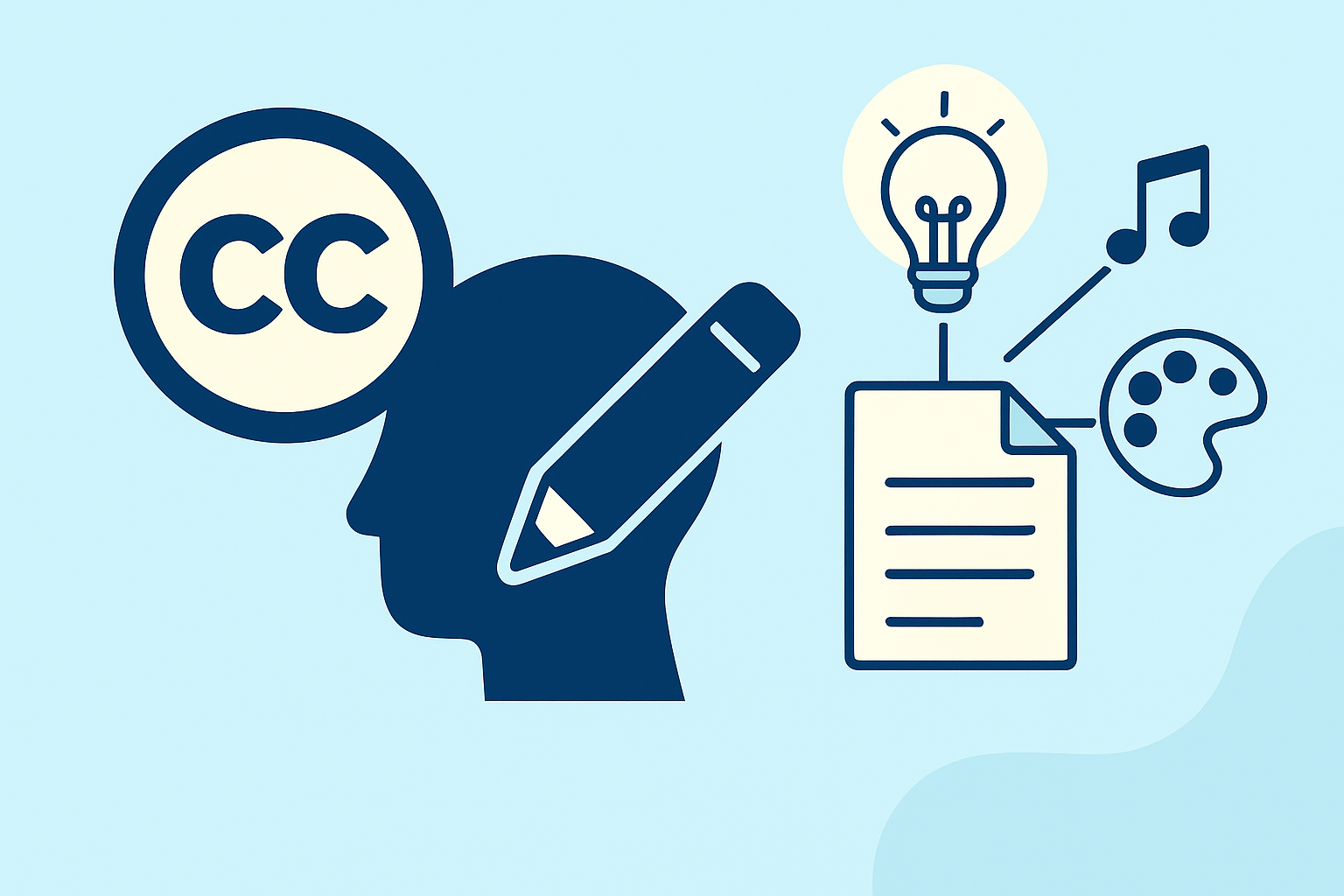Table of Contents
Ever stumbled upon a music track, photo, or video online and wondered if you could legally use it in your own project? As a creator in the digital space, this isn’t just a technical question, it’s a legal one. Copyright laws can be strict and confusing, especially when you’re trying to stay creative without running into takedowns, strikes, or claims.
That’s where Creative Commons licenses come in. Designed to make content sharing safe, simple, and legally sound, these licenses give both creators and users a clear framework to build, remix, and distribute work responsibly. Whether you’re a YouTuber, educator, designer, or indie musician, understanding how these licenses work can protect you and amplify your content’s reach.
What is a Creative Commons License?
A Creative Commons (CC) license is a public copyright license that gives others permission to use your work under certain conditions. These licenses were developed by the nonprofit Creative Commons in 2001 to help creators easily share their content without giving up full copyright protection.
Instead of “All Rights Reserved,” CC licenses work on the principle of “Some Rights Reserved.” This means the creator can choose how others may use their work whether it’s for commercial purposes, remixes, or just sharing with attribution.
Why Creative Commons Licenses Matter
Creative Commons licenses offer a middle ground between full copyright and completely public domain content. They:
- Support collaboration and creativity by making sharing easier
- Provide legal clarity on how content can be reused
- Save time for creators, educators, and businesses who need royalty-free resources
They’ve become widely used by universities, nonprofits, YouTubers, government agencies, and open-source developers.
Types of Creative Commons Licenses
There are six main types of Creative Commons licenses. Each one combines different permissions and restrictions:
- CC BY (Attribution)
You can use, remix, and distribute the work even commercially as long as you credit the original creator. - CC BY-SA (Attribution-ShareAlike)
Similar to CC BY, but any new creations must be licensed under the same terms. Often used by Wikipedia. - CC BY-ND (Attribution-NoDerivs)
You can use the work (even commercially) but can’t change it or make derivative works. Attribution is required. - CC BY-NC (Attribution-NonCommercial)
You can remix and share the work for non-commercial purposes only, and you must credit the creator. - CC BY-NC-SA (Attribution-NonCommercial-ShareAlike)
You can remix, tweak, and share non-commercially, but must use the same license and give credit. - CC BY-NC-ND (Attribution-NonCommercial-NoDerivs)
The most restrictive. You can download and share with attribution but can’t change the work or use it commercially.
CC0 – No Rights Reserved
There’s also CC0, which means the creator has waived all rights and placed the work in the public domain. Anyone can use, modify, or distribute it without asking for permission or giving credit.
This is useful for creators who want their work to be completely free and unrestricted like public datasets, stock photos, or educational resources.
Where to Find Creative Commons Content
You don’t need to guess whether content is CC-licensed. Many platforms label it clearly:
- Flickr – Has advanced search filters for license types
- Wikimedia Commons – Huge repository of free images and media
- YouTube – Filter videos by Creative Commons under usage rights
- Creative Commons Search (Openverse) – Search across multiple CC-friendly platforms
Just remember: even if it’s free to use, proper attribution is often required. Include the creator’s name, source, license type, and a link when possible.
How to License Your Own Work with Creative Commons
Want to let others use your work without giving up full control? You can easily add a Creative Commons license to your blog, video, song, or presentation.
Here’s how:
- Go to the Creative Commons License Chooser
- Answer a few questions about how you want your work to be used
- Get the license badge or legal code to add to your website or file
This helps protect your rights while inviting others to use your work under clear conditions.
Common Misconceptions About Creative Commons
Before using or licensing CC content, beware of these myths:
- “If it’s CC, it’s free for anything” – Not always. Some licenses prohibit commercial use or changes.
- “No need to give credit” – Most licenses require attribution unless it’s CC0.
- “All CC content is vetted” – Not necessarily. You still need to ensure the uploader owns the rights.
Always read the specific license terms before using the content.
Creative Commons in India
In India, Creative Commons is gaining traction among educators, non-profits, and digital platforms. Government-backed initiatives like NROER (National Repository of Open Educational Resources) use CC licensing to promote access to knowledge.
Indian creators are also using CC licenses on platforms like Hoopr, SoundCloud, and personal blogs to allow others to reuse and remix their work.
Why You Should Care About Creative Commons
Creative Commons licenses empower creators to share their work freely while keeping some rights protected. They also give users, whether educators, marketers, or students, a legal way to use content without copyright issues.
By understanding CC licenses, you’re not just protecting yourself, you’re helping build a more open and creative internet.

